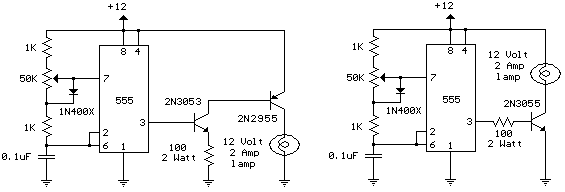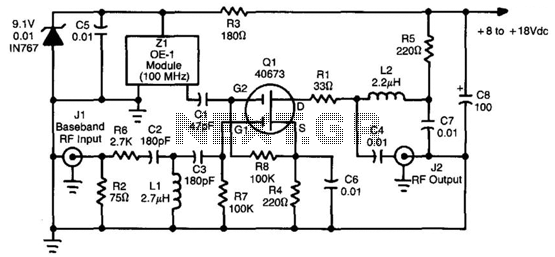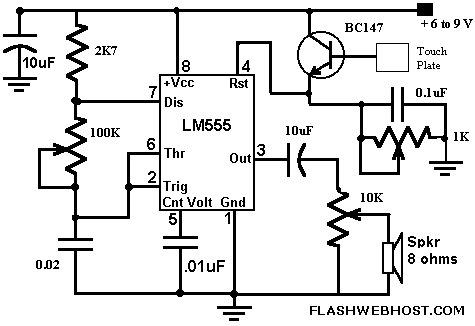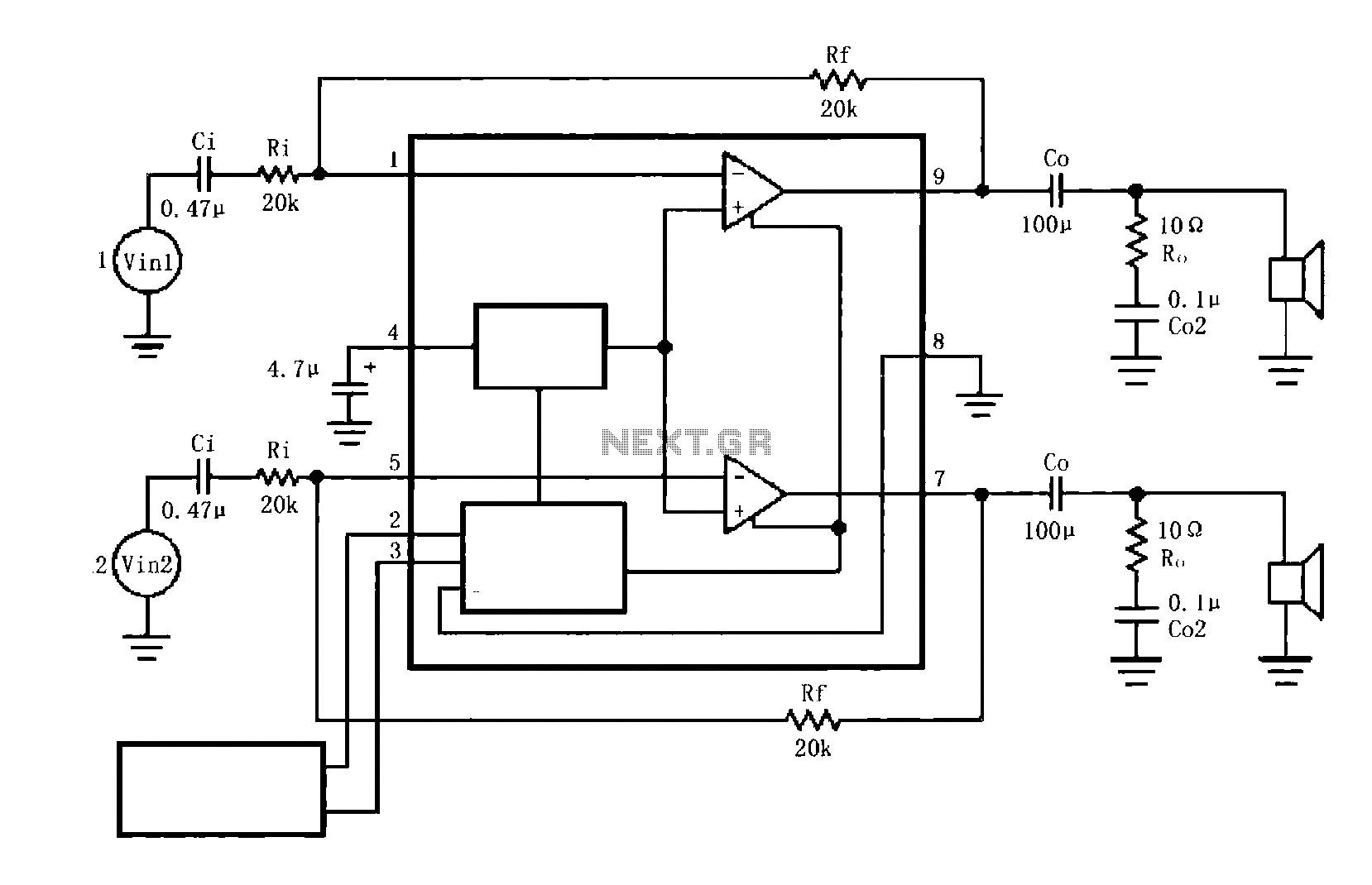
12 Volt Car Lamp Dimmer Circuit Design using 555 Timer

The schematic diagram illustrates a 12 Volt Car Lamp Dimmer Circuit Design utilizing a 555 Timer. This circuit can be employed to dim a standard 25-watt lamp.
The 12 Volt Car Lamp Dimmer Circuit utilizes a 555 Timer in astable mode to control the brightness of a 25-watt car lamp. The circuit consists of a 555 Timer IC, resistors, capacitors, and a transistor to handle the load.
In this configuration, the 555 Timer generates a PWM (Pulse Width Modulation) signal, which is used to control the average power delivered to the lamp. The duty cycle of the PWM signal can be adjusted by varying the resistance values of the connected resistors, allowing for precise control over the brightness of the lamp.
Typically, a potentiometer is included in the circuit to enable the user to adjust the resistance, thereby altering the duty cycle and achieving the desired dimming effect. The output from the 555 Timer drives a transistor, which acts as a switch to control the lamp. The transistor must be chosen based on the current requirements of the lamp to ensure it can handle the load without overheating.
Capacitors are used in the timing circuit to stabilize the operation of the 555 Timer and filter any noise that may affect performance. The circuit operates at 12 volts, making it suitable for automotive applications.
Overall, this dimmer circuit is a practical solution for controlling the brightness of car lamps, enhancing both functionality and aesthetics while providing an efficient use of power.The following schematic diagram shows the 12 Volt Car Lamp Dimmer Circuit Design using 555 Timer. This circuit design can be used to dim a standard 25 watt.. 🔗 External reference
The 12 Volt Car Lamp Dimmer Circuit utilizes a 555 Timer in astable mode to control the brightness of a 25-watt car lamp. The circuit consists of a 555 Timer IC, resistors, capacitors, and a transistor to handle the load.
In this configuration, the 555 Timer generates a PWM (Pulse Width Modulation) signal, which is used to control the average power delivered to the lamp. The duty cycle of the PWM signal can be adjusted by varying the resistance values of the connected resistors, allowing for precise control over the brightness of the lamp.
Typically, a potentiometer is included in the circuit to enable the user to adjust the resistance, thereby altering the duty cycle and achieving the desired dimming effect. The output from the 555 Timer drives a transistor, which acts as a switch to control the lamp. The transistor must be chosen based on the current requirements of the lamp to ensure it can handle the load without overheating.
Capacitors are used in the timing circuit to stabilize the operation of the 555 Timer and filter any noise that may affect performance. The circuit operates at 12 volts, making it suitable for automotive applications.
Overall, this dimmer circuit is a practical solution for controlling the brightness of car lamps, enhancing both functionality and aesthetics while providing an efficient use of power.The following schematic diagram shows the 12 Volt Car Lamp Dimmer Circuit Design using 555 Timer. This circuit design can be used to dim a standard 25 watt.. 🔗 External reference





